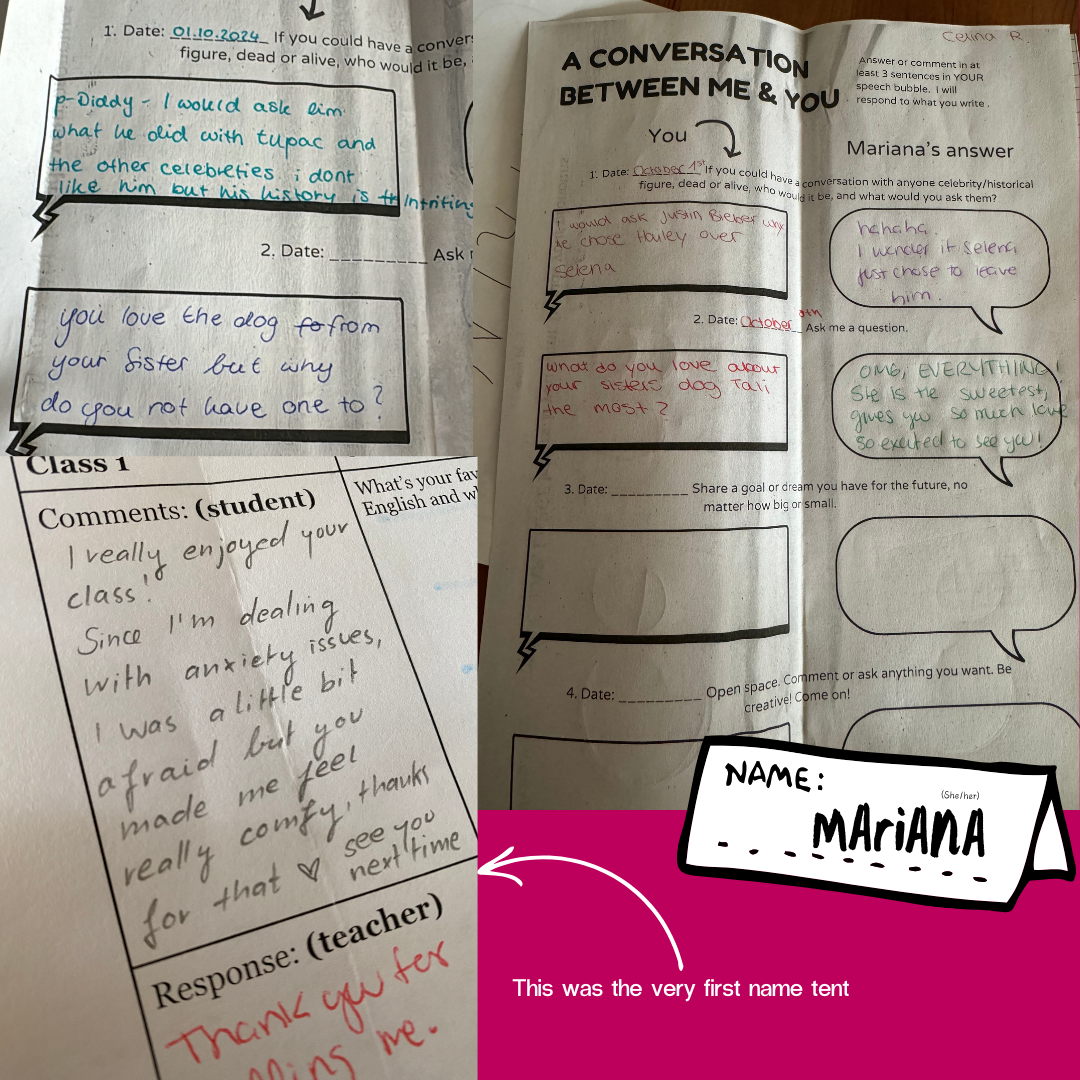How to Implement Name Tents in College Courses: A Practical Guide for Instructors
The Power of Simple Tools in Building Student Connections
As a higher education Business English instructor, I've discovered that sometimes the simplest teaching tools can have the most significant impact on classroom dynamics and student engagement. After randomly stumbling upon them, about four years ago, I've been using name tents in my college courses, and they've become an indispensable part of my teaching toolkit.
What Are Name Tents, and How Do They Work?
Name tents are folded paper cards or sheets of paper that serve a dual purpose in the classroom. The front/outside displays the student's name visible to the instructor and other students, while the inside contains 3-5 thoughtful questions for students to answer (one per class) and for me, as the instructor, to chime in as well. This straightforward tool has transformed how I manage my classroom and connect with students.
Key Benefits of Using Name Tents
Name Recognition Instead of spending weeks embarrassed because I can’t remember everyone’s names, I can call them by their name from the very first class. These visual aids help create immediate recognition and personal connection with each student.
Strategic Seating By placing name tents strategically around the classroom, I can easily organize students for group activities or partner work without the usual confusion or delay.
New Connections The mobility of name tents makes it simple to encourage students to sit next to different classmates throughout the semester, helping build a more connected classroom community.
Personal Interactions The questions on the back provide natural conversation starters and help me understand each student's unique perspective and background.
Name tent examples from past semesters.
Implementation Tips from Experience
While I originally encountered name tents, most examples came from K-12 classrooms, I've found them particularly effective in my college Business English courses. Through experience, I've learned some valuable lessons about implementation at this level:
Timing Matters
Due to the nature of college course enrollment and the common "shopping period" where students add or drop classes, I now wait until after the first two weeks of classes before having students complete the questions on their name tents. Students will get their name tent and write their name when they first walk in the classroom, but I don’t even call attention to the inside until later. Students even think it’s scrap paper. This approach ensures that time invested in writing personal responses isn't wasted on students who may not continue with the course.
Creating an Inclusive Environment
On my own name tent, I include my pronouns (she/her) below my name. This simple act opens the door for students to share their pronouns if they choose to do so. It's important to note that this should always be optional – I simply model the practice and let students know they're welcome to add their pronouns if they wish. This approach helps create a more inclusive classroom environment while respecting each student's privacy and personal choices.
Maintaining Professional Boundaries
While name tents are excellent tools for building rapport, it's crucial to keep the questions professionally focused. I've learned through experience that personal questions (even those that seem to be fairly impersonal) can sometimes lead to students sharing sensitive information or grievances that may be better addressed through proper counseling channels. As instructors, we must recognize that our role and time constraints may not allow us to adequately address deeply personal issues that could arise from such discussions.
Instead, frame questions to encourage positive, forward-looking responses that create connections while maintaining appropriate boundaries. This approach better serves both the students and the instructor while still fostering a supportive classroom environment.
Efficient feedback
I dedicate approximately 10 minutes to writing brief comments on/reacting to student responses. Through trial and error, I've developed a sustainable approach to managing this feedback process. Initially, I felt like I had shot myself in the foot as I tried responding to name tents during my preparation time, but with five courses needing attention, it quickly became overwhelming. Now, I use class time more strategically – I write responses while students are engaged in independent work. I keep the process manageable by not letting groups of responses pile up, typically addressing one group at a time. For each student, I write about one sentence. It now feels much more manageable, and I really enjoy “talking” to students this way.
This small investment of time shows students that they are valued and that they have my attention as their instructor.
Sample Questions for Name Tents
Here are some of the connection-building questions I have used in the past:
Who is your favorite entrepreneur (dead or alive) and why?
If you could be CEO for a day, which company would you run?
What's one skill you'd like to develop this semester?
What's a book or article that has influenced your thinking?
What's an interesting project you've worked on (academic or professional)?
What's one goal you have for your time in college?
Who is someone you look up to and why?
What is your biggest dream or aspiration?
What's the most interesting place you've ever visited?
Getting Started with Name Tents
Want to use this in your classroom? You can make your own, use the one I use, or edit the template I have made for you. Customize the questions to suit your teaching style. The goal is to ask questions that promote thoughtful answers and foster real connections while keeping things professional.
After four years of using name tents in my college courses, I can confidently say they'll remain a permanent fixture in my teaching practice. They've proven invaluable for creating a more engaged, connected, and personal learning environment.
